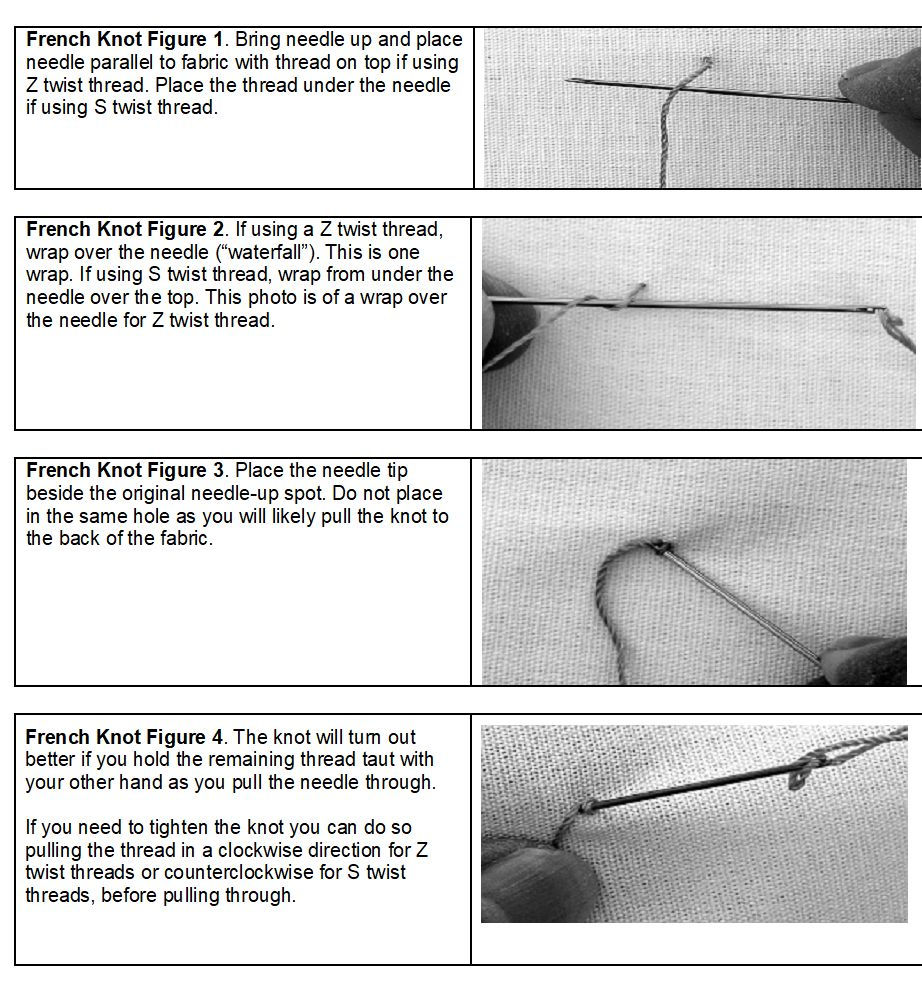Stitch the Perfect French Knot
- jborresoncaruso
- Mar 16, 2021
- 1 min read
The French Knot and Colonial Knot provide a wonderful addition to surface embroidery stitching. There are some stitchers who find the French Knot difficult to execute well. The secret is twofold: make the knot work with the twist of the thread and ensure that the knot is snug against the fabric before pulling through.
First is making sure that the stitch works with the twist of the thread. The French Knot is executed differently for S-twist and Z-twist threads. For S-twist threads, such as stranded cotton floss, pearl cotton and wool, the thread is wrapped counterclockwise around the needle. For Z-twist thread, such as rayon, the thread is wrapped clockwise around the needle.
Second, to make the knot snug before pulling through to the back of the fabric, place the needle tip in the fabric near where the thread came up and then pull the thread in a half-circle around the needle. For S-twist threads, pull the thread in a counterclockwise direction and for Z-twist threads, pull the thread in a clockwise direction. This movement will cause the knot to sit tightly on the fabric surface. Hold on to the knot with your off hand and pull the thread through to the back of the fabric.
A perfect French Knot every time!
Some stitchers prefer the Colonial Knot as they get more consistent results. The Colonial Knot is executed the same for S-twist and Z-twist threads. Directions for these stitches are below.


Copyright 2021. Judy Borreson Caruso. All rights reserved.

Comments